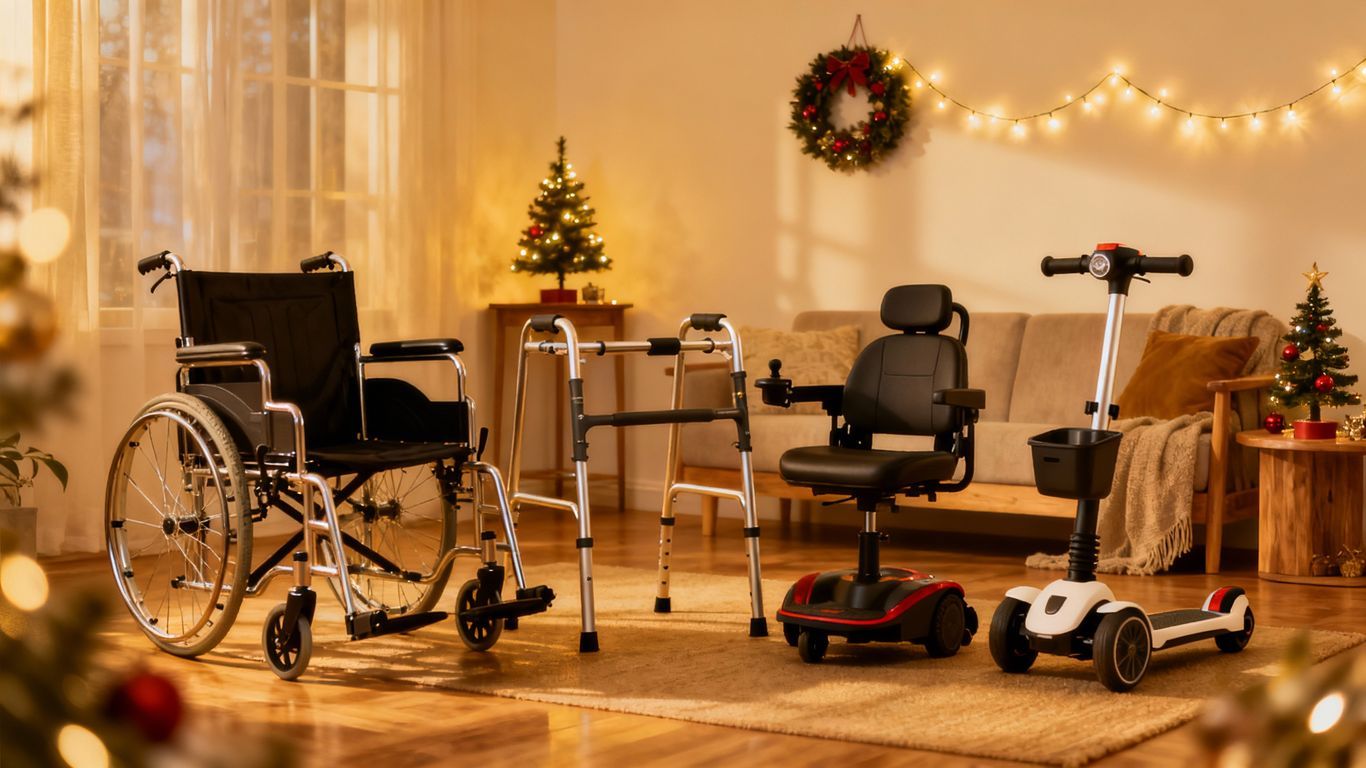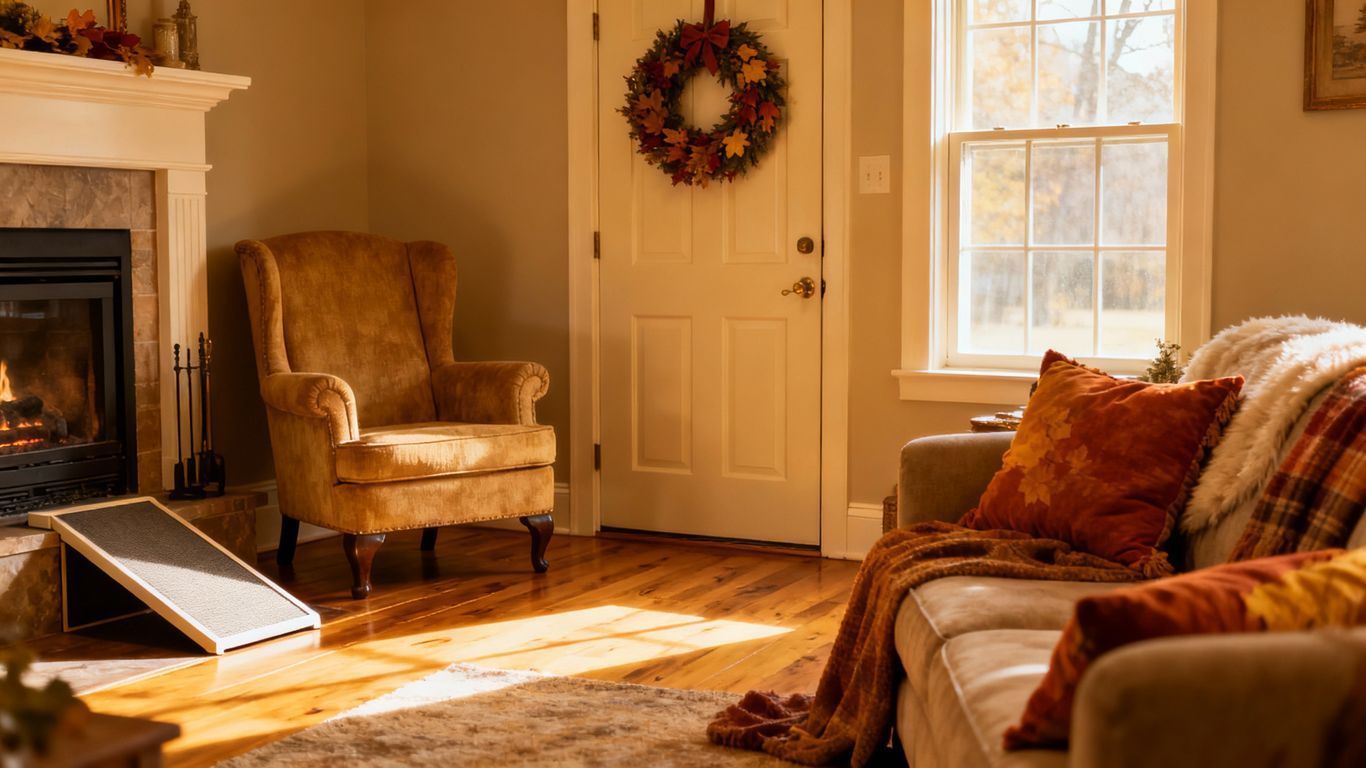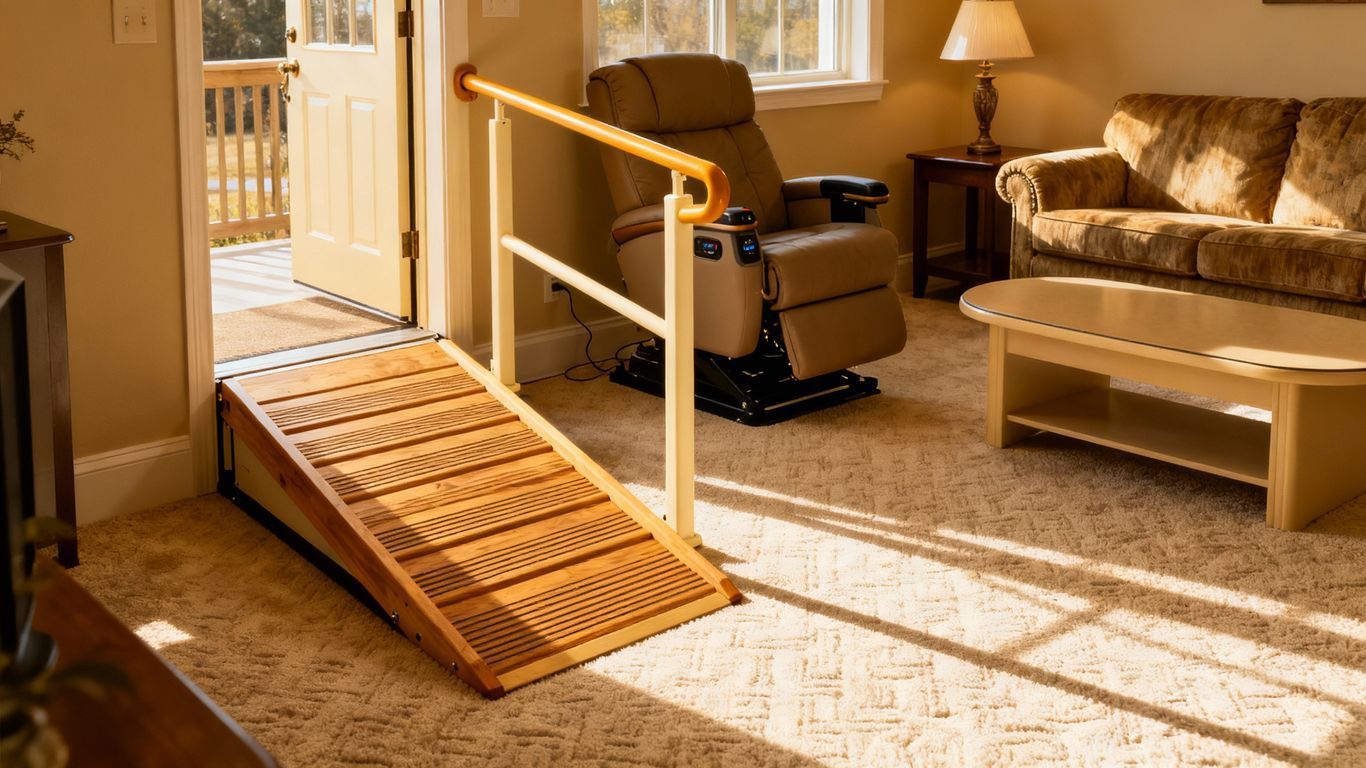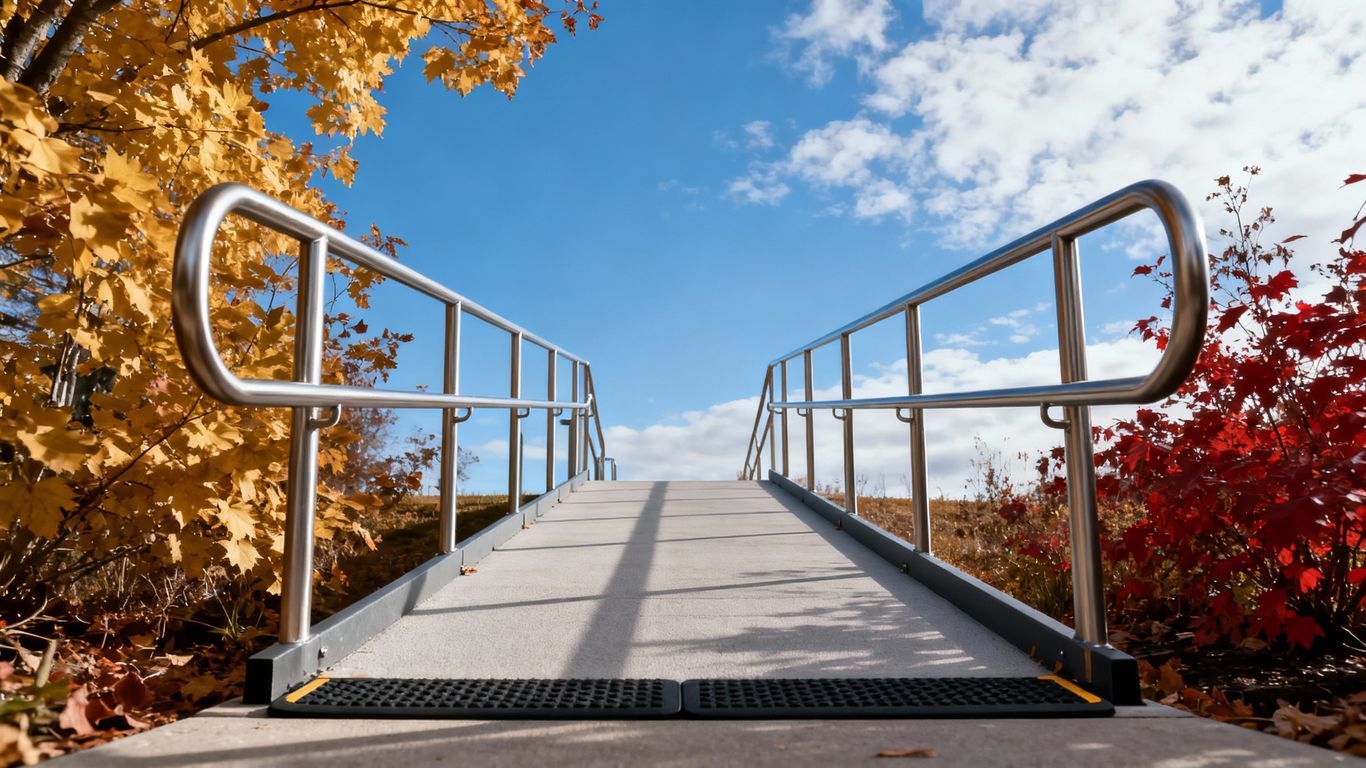How to Install a Bathroom Grab Bar (DIY Tips + Professional Help in Ft. Oglethorpe & Dalton)
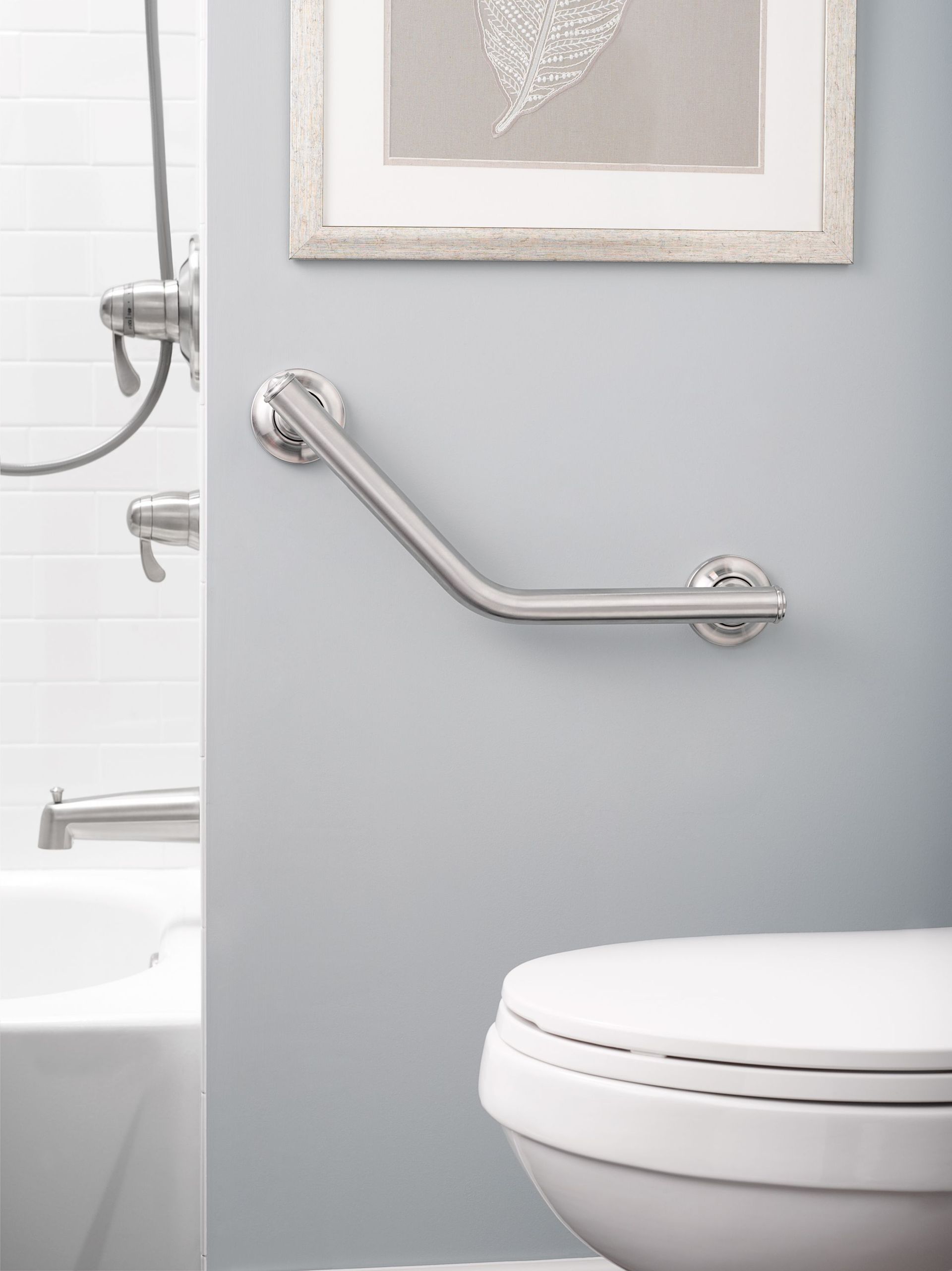
Thinking about making your bathroom safer, especially if you're in the Chickamauga area? Falls in the bathroom are pretty common, and adding grab bars is a smart way to help prevent them. Whether you're planning to tackle this yourself or hire someone, knowing the right steps and where to put them makes a big difference. Let's break down how to get this done.
Key Takeaways
- Grab bars are important for bathroom safety, particularly in areas like Chickamauga.
- You can install grab bars yourself with the right tools and by finding wall studs.
- Proper placement near toilets and showers, considering user height, is key.
- Know when to call a professional for installation to meet codes and ensure stability.
- Regular checks and cleaning will keep your grab bars working well.
Enhancing Bathroom Safety in Chickamauga
Bathrooms can be tricky places, especially as we get older or if we have mobility issues. Think about it: wet floors, slippery tubs, and the simple act of standing up from the toilet can all be a bit dicey. These everyday activities can become real hazards if you're not careful.
Grab bars are a simple yet incredibly effective way to make your bathroom much safer. They give you something solid to hold onto when you need it most. It’s not just about preventing a fall; it’s about maintaining independence and confidence in your own home.
Here are some common bathroom slip-up spots:
- Getting in and out of the shower or tub: This is probably the most common place people need extra support. The transition from a dry floor to a wet shower can be a real challenge.
- Using the toilet: Standing up or sitting down can be difficult, especially for those with knee or hip problems. A grab bar nearby can make a huge difference.
- Moving around the bathroom: Just walking across a wet floor or reaching for a towel can lead to a stumble if you lose your balance.
While a DIY approach can work, sometimes getting a professional involved is the way to go. They know exactly where to place bars for maximum support and can make sure they're installed correctly so they don't budge. This is especially important if you're looking at more complex installations or if you have specific needs. For those in the area, looking into local mobility solutions in Ringgold can provide peace of mind.
DIY Grab Bar Installation Guide
Putting in a grab bar yourself can be a rewarding project, and it doesn't have to be overly complicated. With the right approach, you can add a significant safety feature to your bathroom. The most important part of this process is making sure the grab bar is securely fastened to wall studs. Anything less and it won't be safe.
Choosing the Right Grab Bar
There are a few types of grab bars to consider. You've got your standard straight bars, which are great for general support. Then there are angled bars, sometimes called comfort-grip bars, that can feel more natural to hold. You'll also find bars with suction cups, but these are generally not recommended for permanent, load-bearing support. For most situations, a sturdy metal bar, usually stainless steel or chrome-plated, is the way to go. Think about the finish too – something that won't get too slippery when wet.
Essential Tools and Materials
Before you start, gather your supplies. You'll need:
- A stud finder
- A pencil
- A drill with appropriate drill bits (usually a masonry bit if you have tile, and a wood bit for the studs)
- A level
- A screwdriver or drill bit for the screws
- The grab bar itself, along with its mounting hardware
- Possibly some silicone sealant for waterproofing around the screw holes, especially if you have tile.
Step-by-Step Installation Process
- Locate Studs: Use your stud finder to find the wall studs where you plan to mount the bar. Mark their centers with a pencil. This is non-negotiable for a secure installation.
- Position the Bar: Hold the grab bar against the wall at your desired height. Use the level to make sure it's straight. Mark the screw hole locations on the wall, aligning them with the stud centers you found.
- Drill Pilot Holes: Drill pilot holes at your marked locations. If you're drilling through tile, start with a tile bit and drill slowly to avoid cracking the tile. Then switch to a wood bit to go into the stud.
- Mount the Bar: Attach the grab bar using the provided screws. Make sure they go firmly into the studs. Don't overtighten, but ensure there's no wiggle room.
Securing Grab Bars to Wall Studs
This is the part that really matters for safety. Grab bars need to be anchored directly into the solid wood framing within your walls, known as studs. Drywall alone simply isn't strong enough to support the weight and force a person might put on a grab bar. If you can't find studs in the exact spot you want the bar, you might need to consider alternative mounting methods like heavy-duty toggle bolts or specialized drywall anchors designed for grab bars, but these should be a last resort and only used if the manufacturer approves. Always check the weight rating for any anchor you use.
When you're drilling into studs, it's a good idea to pre-drill holes that are slightly smaller than your screws. This makes it easier to drive the screws in and helps prevent the wood from splitting. If you're dealing with older homes or suspect the studs might be a bit soft, this step is particularly helpful. It's all about creating a solid connection that will last.
If you're looking for professional help with grab bar installation in Ft. Oglethorpe, consider checking out local services that specialize in home accessibility modifications.
Strategic Placement for Optimal Support
Placing grab bars correctly is super important for them to actually help. It's not just about sticking them on the wall; it's about where they go and how they're positioned to give you the best support. Think about the main spots where you might need a little extra help.
Near Toilets and Showers
These are the most common places people need grab bars. By the toilet, a bar can help with sitting down and standing up. In the shower or tub, it's for balance when you're washing or stepping in and out. The goal is to have a stable point of contact right when you need it most.
Consideration for User Height and Reach
Everyone is different, right? So, where a grab bar works best depends on who's using it. You'll want to think about the average height of the people who will use the bathroom. Can they comfortably reach the bar without stretching too much or having to bend awkwardly? It should feel natural to grab onto.
Ensuring Proper Spacing and Angles
Spacing matters a lot. If you're putting up more than one bar, like in a shower, you don't want them too close together or too far apart. They should be positioned to allow for natural movement. For example, a vertical bar near the shower entrance can help with stepping in, while a horizontal one along the wall can offer support while you're standing. It's all about making sure the bars give you a secure grip at the right times. For advice on specific home modifications, you might look into home modifications.
When to Seek Professional Assistance
While installing a grab bar yourself can be a rewarding project, there are times when calling in a professional makes a lot more sense. Don't underestimate the importance of a securely mounted grab bar; a loose one can cause more harm than good. If you're unsure about any part of the process, or if your bathroom walls present unique challenges, it's best to get expert help.
Identifying Installation Challenges
Sometimes, the walls in your bathroom aren't as straightforward as they seem. You might run into issues like:
- Tile or Fiberglass Walls: These can be tricky to drill into without cracking or damaging the surface. Professionals have specialized tools and techniques to handle these materials.
- Unusual Wall Construction: Older homes, or those with unique building methods, might not have standard wood studs where you expect them. Locating and securing to these can be difficult.
- Plumbing or Electrical Obstructions: Hitting a pipe or wire behind the wall is a serious safety hazard. Professionals can often detect these or have ways to work around them safely.
- Lack of Confidence or Experience: If you've never done this kind of work before, or if you're just not comfortable with power tools, it's okay to admit it. A mistake could mean a costly repair or, worse, an unsafe installation.
Finding Qualified Installers in Your Area
When you decide to hire someone, look for contractors who specialize in bathroom modifications or accessibility improvements. You can ask for recommendations from friends or family, or check with local home improvement stores. It's a good idea to get a few quotes and ask about their experience with grab bar installations specifically. Make sure they understand the need for proper mounting into studs, as this is key for grab bar stability.
Ensuring Compliance with Building Codes
Professionals are also aware of any local building codes or ADA (Americans with Disabilities Act) guidelines that might apply to grab bar placement and installation. While a DIY installation might seem fine, it might not meet the required safety standards if you're not familiar with them. Getting it done right the first time by a pro can save you headaches down the road.
Maintaining Your Grab Bars
Once your grab bars are installed, it's important to keep them in good shape. Think of it like taking care of any other safety feature in your home. You want to make sure they're always ready to do their job.
Regular Inspection for Stability
It's a good idea to check your grab bars every so often. Just give them a good tug – not a crazy hard pull, but enough to feel if they're still solid against the wall. You're looking for any looseness or wiggling. If you notice anything feels off, it's time to check the mounting.
Cleaning and Care Recommendations
Keeping your grab bars clean is pretty straightforward. Most are made of materials that just need a wipe-down with a damp cloth and maybe some mild soap. Avoid using harsh cleaners or abrasive pads, as these can scratch the finish or even damage the material over time. Regular cleaning helps prevent buildup and keeps them looking good.
Remember, these bars are there to provide support. If they aren't secure, they can't do their job safely. A quick check now and then can prevent bigger problems later.
Keeping your grab bars in good shape is important for safety. A little regular cleaning makes sure they stay strong and reliable. Want to learn more about keeping your home safe and accessible? Visit our website for helpful tips and services.
Wrapping Up Your Grab Bar Project
So, you've learned the basics of putting in a grab bar yourself. It's a project that can make a big difference in bathroom safety. Remember to pick the right spot and use sturdy anchors. If you're not feeling confident about drilling into your walls or just want to be sure it's done right, don't hesitate to call a pro. For folks around Ft. Oglethorpe and Dalton, there are local services that can handle this for you. Either way, adding a grab bar is a smart move for a safer bathroom.
Frequently Asked Questions
What exactly is a grab bar and why do I need one?
Grab bars are like sturdy handles you put in your bathroom, especially near the toilet or shower. They help you keep your balance and prevent falls, which is super important for everyone, but especially for older folks or anyone who has trouble standing or moving around.
How do grab bars make my bathroom safer?
The main goal is to make your bathroom safer. Think about slippery floors after a shower, or the effort it takes to get up from the toilet. Grab bars give you something solid to hold onto, reducing the chance of slipping or losing your balance.
Can I really install a grab bar myself?
You can totally put them in yourself if you're comfortable with tools! You'll need a drill, a stud finder, screws, and the grab bar itself. The most important part is making sure you screw them directly into wall studs for maximum strength. If you're not sure, it's always best to get a pro.
Where should I put grab bars in the bathroom?
The best spots are usually right next to the toilet, inside and outside the shower or tub, and maybe near the sink. Think about where you need the most support. It's good to place them where someone might naturally reach for something to hold onto.
How do I make sure my grab bar is really secure?
For the best support, grab bars should be installed into wall studs, which are the strong wooden beams inside your walls. Using a stud finder helps you locate these. If you can't find a stud where you want the bar, you might need special anchors designed for drywall, but attaching to studs is always the strongest option.
Are there any rules or codes I need to follow for installing grab bars?
Yes, there are rules about how high they should be and how strong they need to be, especially if you're building or remodeling. These rules help make sure the grab bars will actually hold weight and be effective. A professional installer will know these rules, but if you're doing it yourself, it's worth looking them up.
